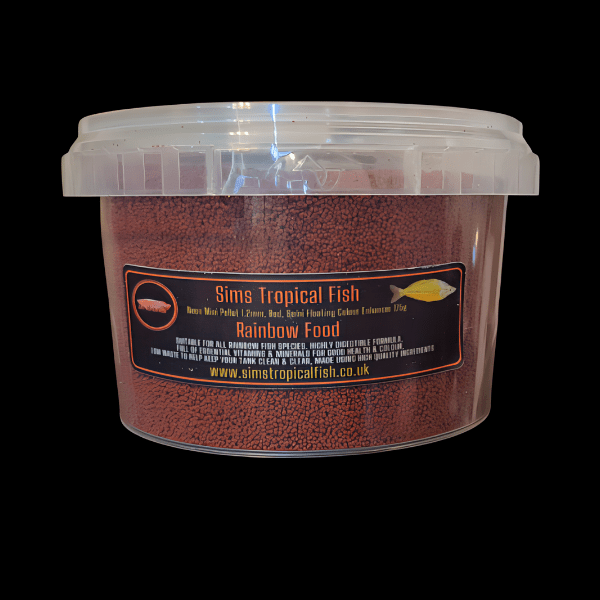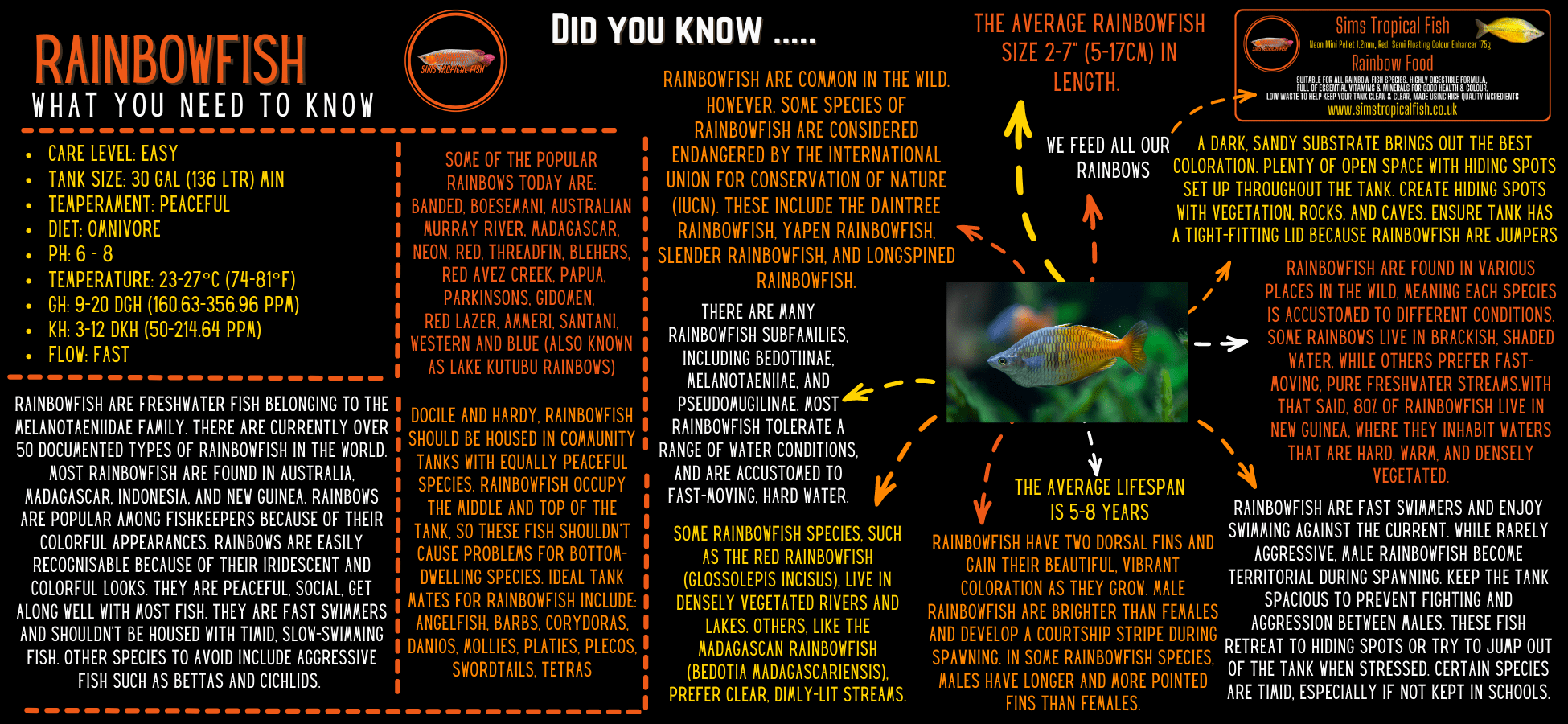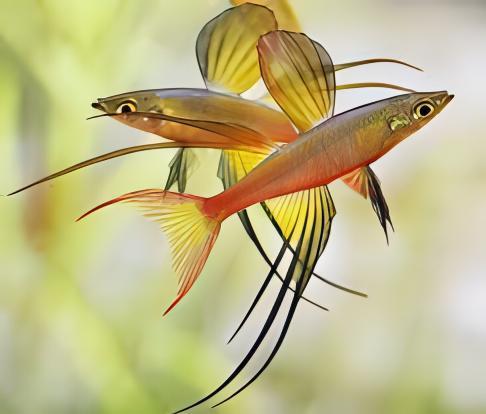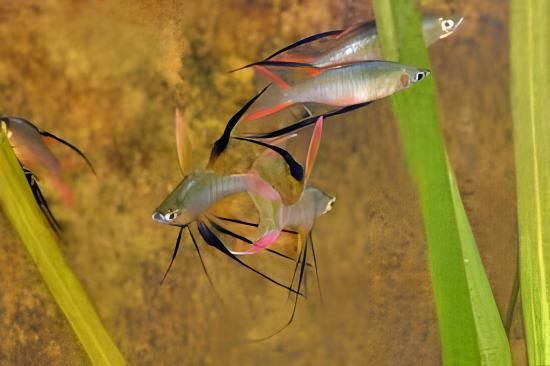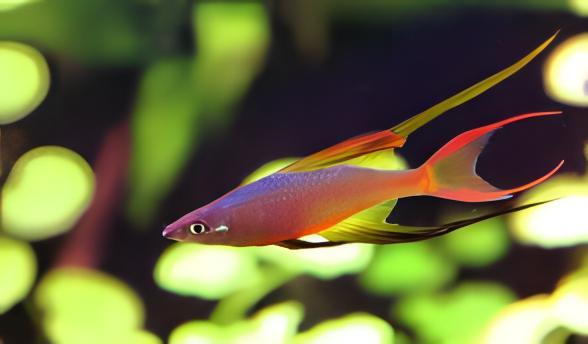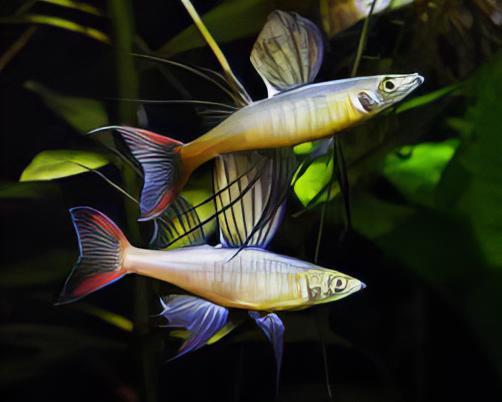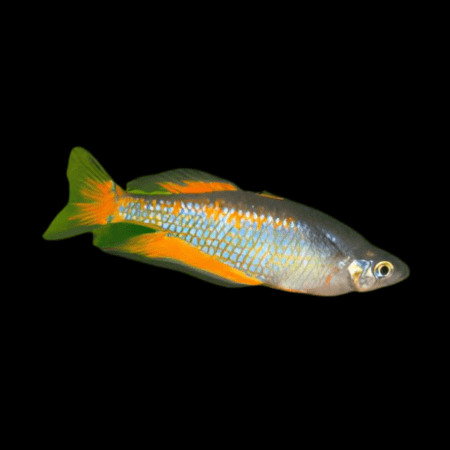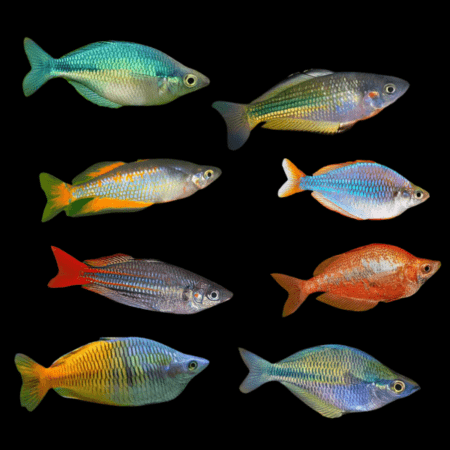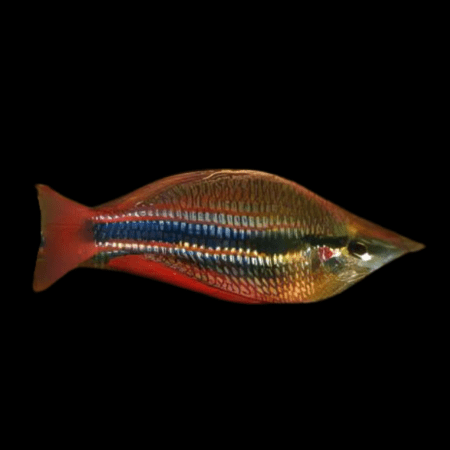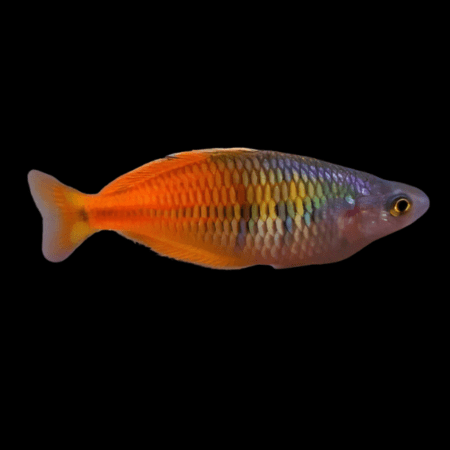Description
Threadfin Rainbow Fish Iriatherina Werneri
The Threadfin Rainbowfish was scientifically described by Meinken in 1974 and given the name Iriatherina werneri. The species was discovered in an irrigation ditch in Western New Guinea (formerly known as Irian Jaya). It entered the European aquarium hobby in 1974, but in those early days only males were offered. Today, you can find both sexes in the aquarium trade and the species is bred in aquariums.
Description
The Threadfin Rainbowfish is will normally stay below 4 cm (1 ½ inch) in length. The body is brownish with silvery reflections. The populations found in New Guinea are somewhat darker than their Australian counterparts.
Both sexes are darker on the backs, but it is especially noticeable in males. The male fish will also develop thread-like filaments and it is these elongated filaments that have given the species its common name. The male is also more colourful and it is common for Threadfin Rainbowfish males to have a yellow or red first dorsal fin and red or reddish caudal fin lobes.
Geographical distribution, habitat and conservation
The Threadfin Rainbowfish in found in south-central New Guinea and the Cape York Peninsula, Australia. It lives in slow flowing streams, ditches, billabongs, swamps and swampy lagoons. All these habitats are filled with dense aquatic vegetation, including floating plants that shadow the water and provide shelter for fish. The species is not included in the IUCN Red List of Threatened Species.
Keeping Threadfin Rainbowfish in aquariums
If you manage to nurse your Threadfin Rainbowfish back to health when it has been exposed to transport and new unfamiliar conditions, it can become quite an easy species to care for in the aquarium. Keep the water temperature, pH-value and water hardness stable and do not carry out large water changes; small and frequent water changes are much better for this fish. The recommended temperature range is 25-28 degrees C (77-82 degrees F) and the pH-value should be 6.0-7.5. Some populations of Threadfin’s live in even more acidic conditions in the wild, such as the Cape York population which is used to a pH-value down to 5.5.
Try to mimic the natural habitat of the Threadfin Rainbowfish when you set up the aquarium and include a lot of plants. The small and friendly Threadfin Rainbowfish is normally kept in species aquarium or together with other species of rainbowfish.
Breeding Threadfin Rainbowfish
The Threadfin Rainbowfish is fairly easy to breed. (For sexing guidelines, se the “Description” section above.) If you want to breed Threadfin Rainbowfish you must of course keep it in optimal conditions and make sure that it is healthy and happy in the aquarium. You should also provide the fish with bushy plants like java moss or include a few spawning mops in the setup. Live food is known to promote spawning; you can for instance grow your own brine shrimp and daphnia.
The male Threadfin Rainbowfish will court the female by displaying in front of her. He will extend his first dorsal and anal fins and “flick” them to look more impressive. During the actually spawning, the female will release tiny eggs that will stick to a plant or spawning mop. The safest course of action is normally to move the plant/mop to a separate fry rearing aquarium to avoid predation. It is very important to keep the water quality up in the fry rearing aquarium, because the fry are quite sensitive. You can feed the fry egg yolk or infusoria until they are large enough to accept newly hatched brine shrimp.

